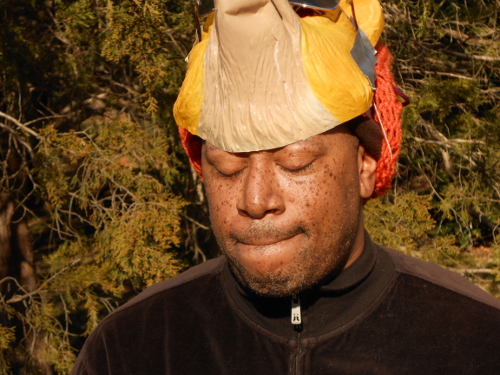Below is an article I wrote for the April issue of the Parkwood Inside/Out.
The rarest tree in Parkwood
The big tree between the Parkwood Athletic Association field and the Masjid Ibad Ar-Rahman mosque might seem unremarkable, the quintessential tree, but it is the only Eastern or Carolina cottonwood I know of in Parkwood. Until recently it was the only one I knew of anywhere, but a year or two ago I was at the intersection of 54 and 55 and realized that the tall tree beside a stream between Walgreens and McDonalds is a cottonwood, and I saw a cottonwood of some kind at the Rollingview area of Falls Lake. River Dave once told me there are some along the Eno River and closer afield at New Hope Creek. Next to Parkwood’s cottonwood there used to be a pile of ballfield gravel, which resembles rocks along the Eno, so I wondered if the cottonwood might have come with a load of gravel, but since there is another arone around, maybe it came from this area after all.
Cottonwoods (Populus deltoides) are real poplars (“tulip poplars” are in the magnolia family) and resemble famous relatives like quaking aspens. The name poplar might come from a Latin phrase, arbor populi, the people’s tree, and the deltoides probably refers to the leaf shape. Eastern cottonwoods have large, spade-shaped leaves ending in a long point and with hook-shaped serrated edges. The leaf petioles are long and compressed, and there are glands at the leaf end. With these long stems, the thick leaves flap in a breeze, making a lot of noise. The yellowish twigs have a lumpy profile and have a squarish cross-section where there is a lot of growth. The terminal buds are covered by 6-7 scales and are supposed to be sticky or resinous, but not fragrant. Cottonwood leaves fall early in the season and without much color. Cottonwoods put on height quickly, as much as 13’ their first year, getting about 100’ tall (but higher in the West), sometimes after only 15 years, and develop an ever spreading form similar to broccoli, as can be seen in Parkwood. Our cottonwood has a stout trunk with strong branches starting near the ground and sweeping around, ending in twigs with an upward turn like claws. Cottonwoods have thick bark, but young trees are not very fire-tolerant, one factor limiting where they could grow out on the prairies. As with many fast-growing trees, cottonwoods don’t live very long, only about a century.
Other poplars grow in NC, including swamp cottonwoods (P. heterophylla), but I think our tree is an Eastern cottonwood. The only other poplars I know of in Durham are the very columnar Lombardy poplars, European ornamentals planted in yards, and white poplars, naturalized European trees which have an overall white appearance and form thickets, such as the one behind the former Triangle Nursery.
Long, wind-pollinated catkins (thus the name necklace poplar) emerged on Parkwood’s cottonwood in early March, while the leaves were still in large, conical buds. Each tree produces only one sex of flowers. On female trees small cottony seeds mature later in the spring, and fill the air. Wind dispersal allows cottonwoods to find rare open ground, such as bare banks of streams. The seeds have to drift to suitable ground fast, because they don’t remain viable very long.
In tree-rich Durham, cottonwoods are just another deciduous tree, but they could be called a Laura Ingalls Wilder tree, and were valued out on the prairies, where they were one of the few large trees, usually growing near water. The outer sapwood is wide, whitish, and lightweight, while the heartwood is dark brown. Cottonwood is easy to carve, but inflexible and warps a lot when drying, so it is mainly used for crates, plywood, excelsior (shredded wood, like the mulch on the path to the Hidden Playground), matches, and paper pulp. Indians in the Midwest used cottonwood for poles and started fires with the roots, and reportedly teepees relate to the shape of cottonwood leaves and children played with various tree parts. Cottonwoods are planted as windbreaks and to reclaim mines.
Deer, beavers, rabbits, and mice chew on the twigs and livestock can eat saplings if hay runs out. One guide says tea of the inner bark was used as a “female tonic” and to relieve scurvy, and cottonwoods produce aspirinlike salicin. Purple finches and other birds and squirrels eat the buds and catkins. Bees sometimes harvest the pollen, though the trees don’t rely on animals for pollination. Mourning cloak and red admiral caterpillars might eat the leaves, but around here they have many other choices, so cottonwoods seem to have few herbivores. Cottonwoods frequently develop internal rot, creating cavities for owls and squirrels.
To find out about the black locusts blooming at Parkwood Lake Dam this month and the honeylocusts on the Tobacco Trail, check out my article in the April issue of the Chatham County Line) newspaper.
My article in the May issue covers catalpa trees, such as the southern catalpa on Revere Road and others blooming in a few weeks.






